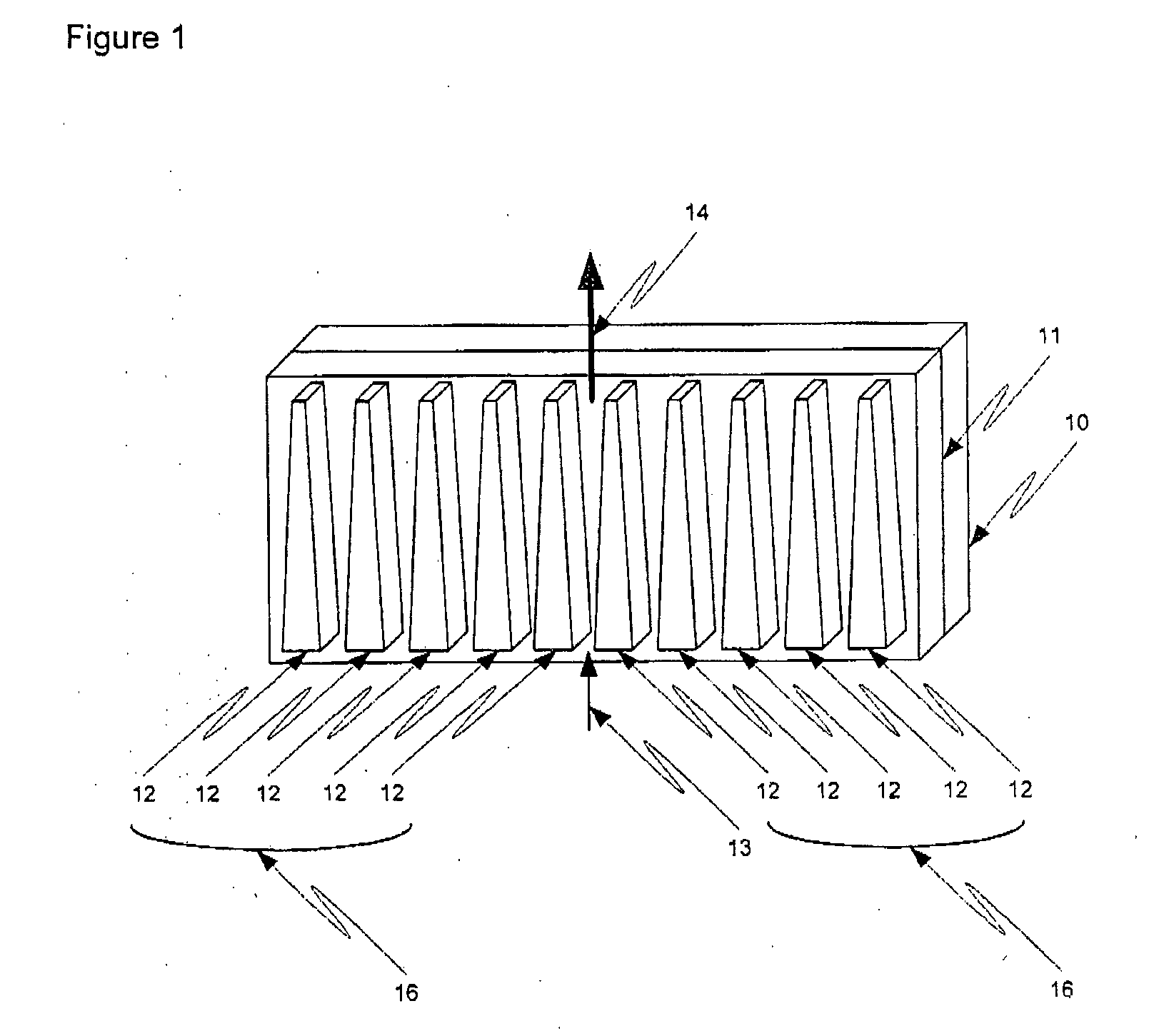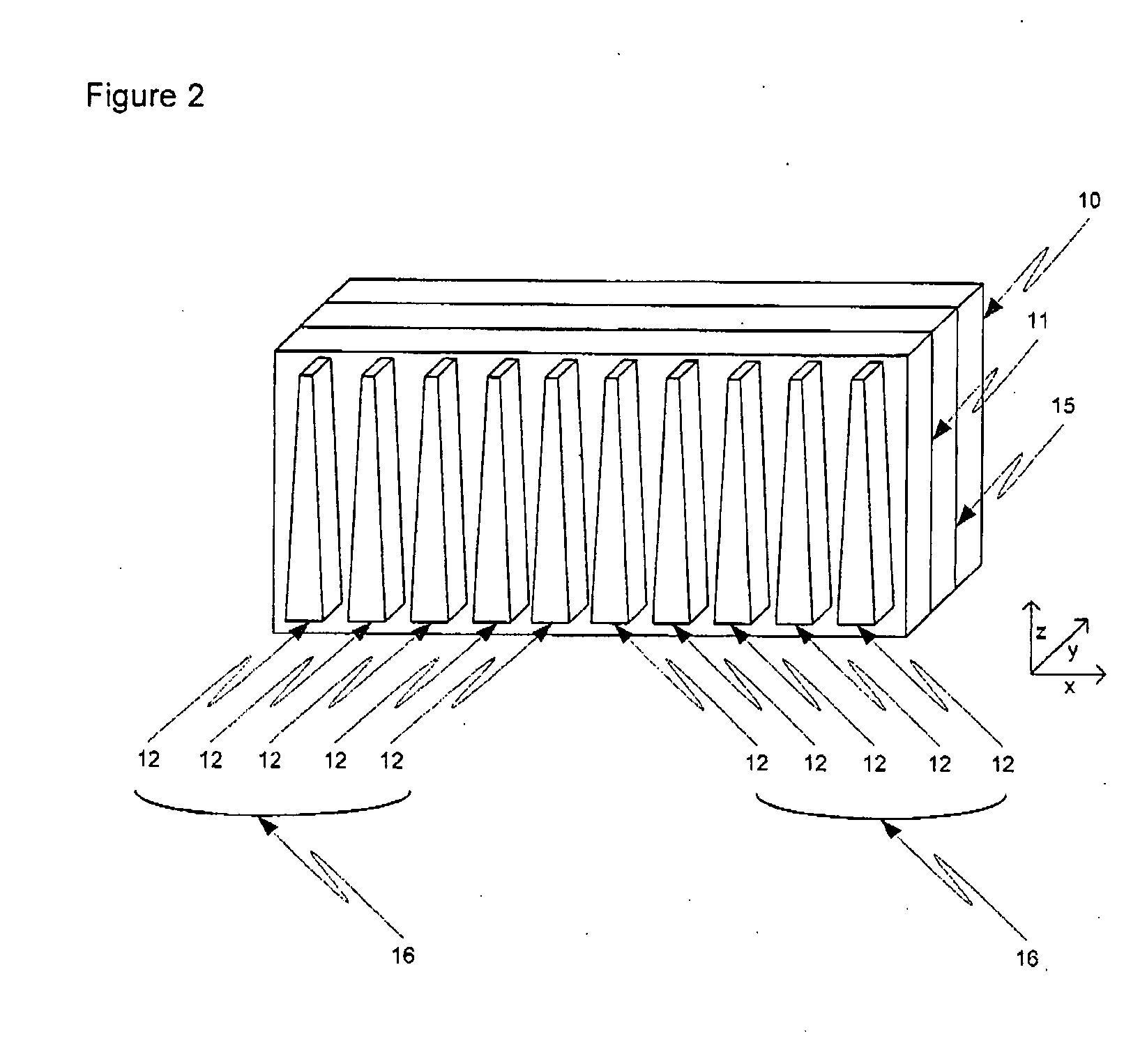Heatsink method and apparatus
- Summary
- Abstract
- Description
- Claims
- Application Information
AI Technical Summary
Benefits of technology
Problems solved by technology
Method used
Image
Examples
example i
[0030] In a first example of the invention, a heatsink is coupled to a heat source. FIG. 1 provides a perspective view of a heatsink 11 coupled to a heat source 10. In a first case, the heatsink 11 is attached to at least a portion of one side of the heat source 10. In a second case, the heatsink 11 surrounds the heat source 10 or covers a plurality of sides of the heat source 10. The heatsink has a set of heat exchange elements 16, such as a series of fins 12. The fins 12 are either attached to the heatsink 11 or are integral to the heatsink 11. The area, distance, or volume between two or more fins 12 is referred to in a number of ways including: a gap, a channel, a distance between heat dissipating elements, a region between fins, a cross-sectional area, a region between a pair of fins, and an expanding volume along the z-axis. By tapering the fins 12, the distance between the fins 12 increases as a function of height. In this example, a gas, such as air, passively moves either t...
example ii
[0032] A second example of the invention is presented schematically in FIG. 2. A heat source 10 is coupled to a heatsink 11 through intermediate means 15, such as a thermally conductive material or a heatpipe. The intermediate means is optionally a layer. The intermediate means 15 are designed to move heat from the heat source 10 to the heatsink 11. The intermediate means cover at least part of the heat source 10 and the heatsink 11 covers at least part of the intermediate layer. Optionally, two, three, or more intermediate means or materials are used. The heatsink is preferably constructed with a set of two or more heat exchange elements, such as a set of fins 12, designed to induce and increase air flow across the heatsink passively.
example iii
[0033]FIG. 3 illustrates a third example of the invention. In this example, a heatsink 11 covers, directly or indirectly, at least a portion of a surface of a preferably vertically orientated heat source 10. A set of heat exchange elements, illustrated as fins 12 are integrated into the heatsink 11 are tapered in two-dimensions. The distance between the fins 12 is tapered along the z-axis as in Example I. In addition, the fins 12 are tapered between the outmost surface of the fin and the contact with the heatsink 11. This allows the gas to expand and rise upward with a component vector toward the heatsink 11. This results in a larger airflow and more contact area with the base portion of the heatsink 11, which is typically hotter than the outermost portion of the fins 12. Thus, tapering the fins in at least-two dimensions increases the efficiency of the heatsink. Optionally, the heat dissipating element, such as a cone or fin, is tapered along three-dimensions. In addition, tapering...
PUM
 Login to View More
Login to View More Abstract
Description
Claims
Application Information
 Login to View More
Login to View More - R&D
- Intellectual Property
- Life Sciences
- Materials
- Tech Scout
- Unparalleled Data Quality
- Higher Quality Content
- 60% Fewer Hallucinations
Browse by: Latest US Patents, China's latest patents, Technical Efficacy Thesaurus, Application Domain, Technology Topic, Popular Technical Reports.
© 2025 PatSnap. All rights reserved.Legal|Privacy policy|Modern Slavery Act Transparency Statement|Sitemap|About US| Contact US: help@patsnap.com



